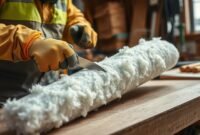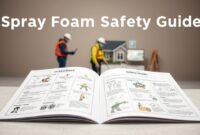Many homeowners don’t know how many inches of insulation are in the attic, which leads to them not having enough insulation. You don’t have to be a rocket scientist to understand attic insulation depth or how much you need the insulation for your attic.
Understanding the facts can help you know how to properly do the installation (if you prefer the DIY method) or how much the installation service has (if you hire a service to do the installation).
Either way, knowing the proper installation or method can help you make educated spending while preventing unnecessary spending.
How Do I Know if My Attic Has Enough Insulation?
If your attic is properly insulated, you will no longer have any attic (or roofing) issues. So, how do you know if your attic is properly insulated?

You should NEVER experience these problems because they are a sign that you have poor insulation issues.
- Water Leakage
Be aware if you experience a water leak because it may indicate improper insulation. Water likes to slip through the gaps and cracks, leading to water damage to your ceiling and walls. If you see any sign of a water leak, it’s better to call a pro so they can check and prevent further issues.
- Ice Dams
Ice dams are ice ridges or blocks that are created from non-stop snow melting and freezing. If you have ice dams in your attic, it’s a sure thing you have an insulation problem. You need to call a professional to deal with it.
- Pest Issue
Your house is supposed to be ‘sterile’ from any pests, including mice or bugs. So, if you find one, it may be related to the insulation. Contact a professional and check your perimeter. There were cases where the insulation wasn’t thick enough, leading to poor insulation.
- Cold Drafts
If you notice that your attic is always chilly and you also feel the cold drafts around the house, you may not have enough insulation.
- Mold and Moisture
Your attic shouldn’t be moldy. So, if you find one, it’s most likely that your attic has a moisture issue resulting from poor insulation. If your attic experiences mildew or dampness, then it’s likely a sure thing that you have an insulation problem.
- Inconsistent Temperature
Another sign of poor insulation is the inconsistent temperature around the house. You may find one room is hotter than the others while another one is colder than the rest of the house. Even after you have changed the heater or cooler, the problem doesn’t seem to go away.
You may want to contact a professional service so they can help you check the insulation because it’s not doing its job so well.
- Frozen Pipes
If you find frozen pipes within your walls, you are likely dealing with insulation issues. You may also deal with the possibility of bursting pipes, which can cost you a hefty spending. Don’t wait too long if you find any frozen pipe issues.
What Is the Required Amount of Insulation in an Attic?
About the question how many inches of insulation is in the attic, it depends on the insulation type and also the level (known as the R-value). R-value is about the measurements of the insulation (and its ability) to resist the heat flow.
In most cases, the higher the value, the better the insulation’s thermal performance. For most attics, the recommended level would be around R-38 or 10 inches to 14 inches, give or take.
Conclusion
Ultimately, it will be hard for you to find the real culprit of the problem. Reach out to a professional and trusted service as they can help you with their expertise.
They also know the real deal about how many inches of insulation are in the attic, which means they can assist you if you encounter problems.


